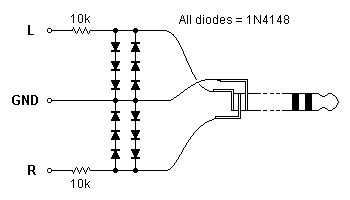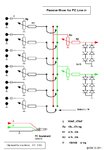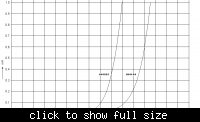nathaniel
Newbie level 3

Hi all
I'm just starting out with electronics as a hobby. One of the main things I want to do is build noise-making circuits (e.g. audio-frequency oscillators) whose output I will record using my computer. I want to experiment a lot with circuit design (I have plenty of theoretical background, I just don't have much practical experience), but I don't want to risk damaging my computer's sound card - or at least, I want to minimise that risk as much as possible.
I've found various circuit designs that include line-level outputs, but what I can't seem to find is general advice on connecting home-made circuits to computer sound cards. Specifically: what voltage range should the signal have? How much resistance will the line-in port have? How much risk is there of damaging the sound card (e.g. if I stick to battery powered circuits will I be safe, or will accidentally plugging 9 volts of DC into my sound card kill it?) and what can I do to minimise any risk? For example, is there something I can buy or build to limit the voltage and current to safe levels, or isolate it so that if I accidentally connect it to my power supply I'll blow my home-made circuit instead of my sound card? Also, what (if anything) would I need to do differently to connect a circuit to headphones rather than my computer?
If anyone can answer these questions, or give me some more general advice, or point me to some kind of how-to document for this sort of thing, I'll be very grateful.
I'm just starting out with electronics as a hobby. One of the main things I want to do is build noise-making circuits (e.g. audio-frequency oscillators) whose output I will record using my computer. I want to experiment a lot with circuit design (I have plenty of theoretical background, I just don't have much practical experience), but I don't want to risk damaging my computer's sound card - or at least, I want to minimise that risk as much as possible.
I've found various circuit designs that include line-level outputs, but what I can't seem to find is general advice on connecting home-made circuits to computer sound cards. Specifically: what voltage range should the signal have? How much resistance will the line-in port have? How much risk is there of damaging the sound card (e.g. if I stick to battery powered circuits will I be safe, or will accidentally plugging 9 volts of DC into my sound card kill it?) and what can I do to minimise any risk? For example, is there something I can buy or build to limit the voltage and current to safe levels, or isolate it so that if I accidentally connect it to my power supply I'll blow my home-made circuit instead of my sound card? Also, what (if anything) would I need to do differently to connect a circuit to headphones rather than my computer?
If anyone can answer these questions, or give me some more general advice, or point me to some kind of how-to document for this sort of thing, I'll be very grateful.







